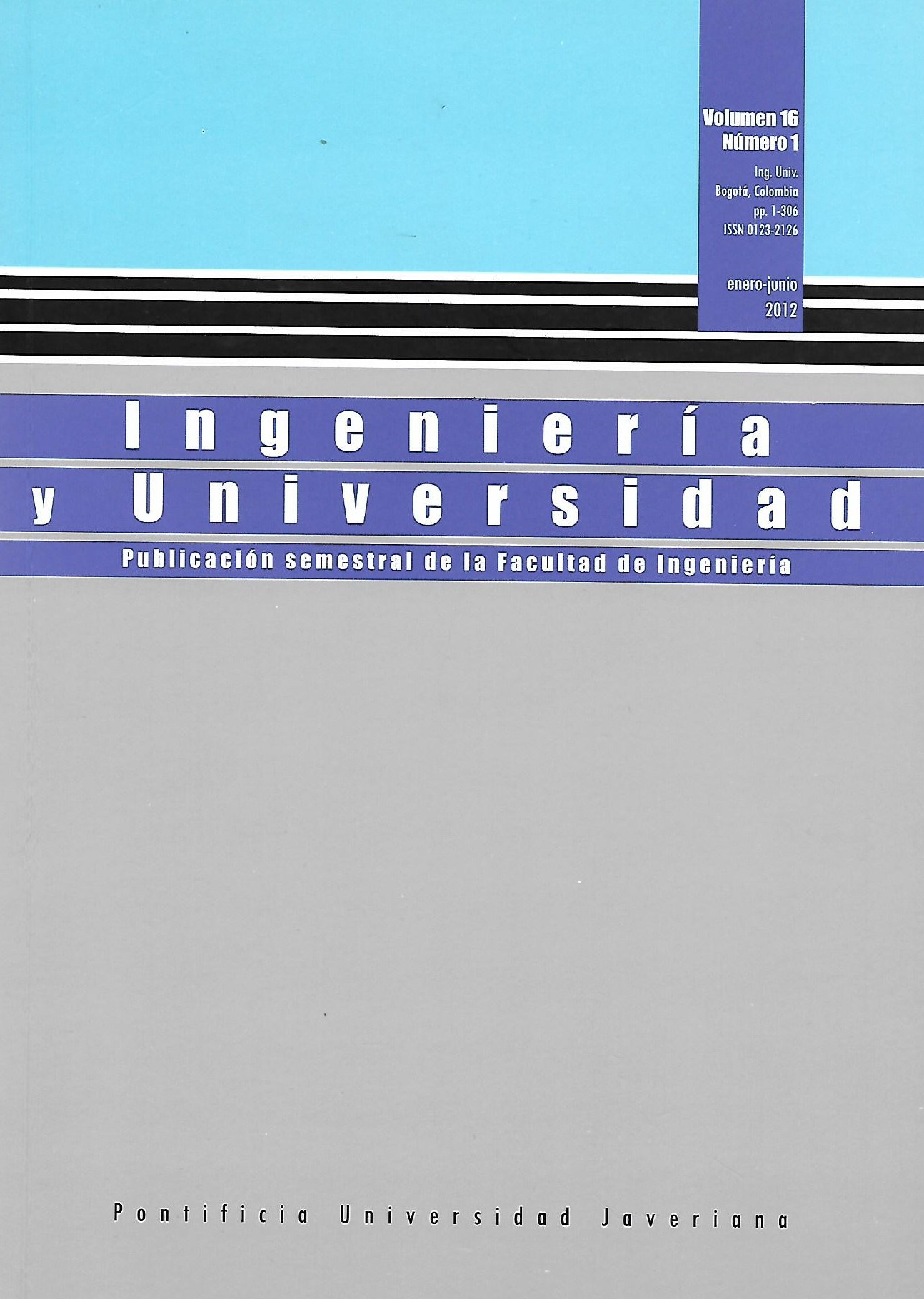Abstract
We have studied the electrochemical corrosion behavior of epoxy paint coatings through the electrochemical impedance spectroscopy technique. In order to determine the protection and failure mechanisms of these coatings, we correlated the polarization resistance in the immersion time function and in the morphology. In order to do this, we characterized the microstructure of the coatings by scanning electron microscopy and X-ray infrared spectroscopy. The coatings show degradation during the immersion time due to defects in their microstructure; however, the protective and failure mechanisms depend on the immersion time. These details are discussed in this research
Corrosion Science. 2009, vol. 51, núm. 2, pp. 356-363.
CRESWELL, C.; RUNQUIS, O. y CAMPBELL, M. Análisis espectral de compuestos orgánicos. México: Diana, 1972.
DYER, J. Aplicaciones de espectroscopía de absorción en compuestos orgánicos. New Jersey: Prentice Hall International, 1973.
EVTUSHENKO, Y. M.; IVANOV, V. M. y ZAITSEV, B. E. Determination of epoxide and hydroxyl groups in epoxide resins by IR spectrometry. Journal of Analytical Chemistry. 2003, vol. 58, núm.4, pp. 347-350.
FLORES, J. F.; OLAYA, J. J.; COLAS, R.; RODIL, S. E.; VALDEZ, B. S. y FUENTE, I. G. Corrosion behaviour of TaN thin PVD films on steels. Corrosion Engineering, Science & Technology. 2006, vol. 41, núm. 2, pp. 168-176.
FORSGREN, A. Corrosion control through organic coatings. Boca Raton: Taylor and Francis Group, 2006.
HU, J.; LI, X.; GAO, J. y ZHAO, Q. Uv aging characterization of epoxy varnish coated Steel upon exposure to artificial weathering environment. Materials & Design. 2009, vol. 30, núm. 5, pp. 1542-1547.
ITAGAKI, M.; ONO, A.; WATANABE, K.; KATAYAMA, H. y NODA, K. Analysis on organic film degradation by dynamic impedance measurements. Corrosion Science. 2006, vol. 48, núm. 11, pp. 3802-3811.
LEE, C. y MANSFELD, F. Automatic classification of polymer coating quality using artificial neural networks. Corrosion Science. 1999, vol. 41, núm. 3, pp. 439-461.
LIU, C.; BI, Q.; LEYLAND, A. y MATTHEWS, A. An electrochemical impedance spectroscopy study of the corrosion behaviour of PVD coated steels in 0.5 N NaCl aqueous solution: Part I. Establishment of equivalent circuits for EIS data modelling. Corrosion Science. 2003, vol. 45, núm. 6, pp. 1243-1256.
MARCHEBOIS, H.; JOIRET, S.; SAVALL, C.; BERNARD, J. y TOUZAIN, S. Characterization of zinc-rich powder coatings by EIS and Raman spectroscopy. Surface and Coatings Technology. 2002, vol. 157, núms. 2-3, pp. 151-161.
MARTIN, S. y ÁNGELES, M. E. Efecto de la temperatura en la evaluación de recubrimientos anticorrosivos. Tesis doctoral, Universidad Autónoma de México, México D. F., México, 2006.
OLIVEIRA, C. G. y FERREIRA, M. G. S. Ranking high-quality paint systems using EIS. Part I: intact coatings. Corrosion Science. 2003, vol. 45, núm. 1, pp. 123-138.
QIAN, M.; SOUTAR, A.; TAN, X.; ZENG, X. y WIJESINGHE, S. Two-part epoxy-siloxane hybrid corrosion protection coatings for carbon steel. Thin Solid Films. 2009, vol.517, núm. 17, pp. 5237-5242.
SILVERSTEIN, R.; WEBSTER, F. y KIEMLE. D. Spectrometric identification of organic compounds. 7th Ed. New York: Wiley, 2005.
TORRES, M. y OLAYA, J. J. Estudio comparativo del proceso de corrosión en recubrimientos cerámicos, metálicos y orgánicos mediante técnicas electroquímicas. M. S. tesis, Universidad Nacional de Colombia, Bogotá, Colombia, 2010.
TORRES, M.; CHIPATECUA, Y.; MARULANDA, D. M. y OLAYA, J. J. Estudio comparativo de la evaluación a la corrosión de recubrimientos de CrN y CrN/Cr con recubrimientos de cromo electrodepositado y pinturas tipo epoxy. Ingeniería e Investigación. 2010, vol. 30, núm. 3, pp. 8-15.
WICKS, Z. Epoxy and phenolic resins. Organic Coatings. 2007, pp. 271-294.
ZHANG, J.; HU, J.; ZHANG, J. y CAO, C. Studies of water transport behavior and impedance models of epoxy-coated metals in NaCl solution by EIS. Progress in Organic Coatings. 2004, vol. 51, núm. 2, pp. 145-151.
This journal is registered under a Creative Commons Attribution 4.0 International Public License. Thus, this work may be reproduced, distributed, and publicly shared in digital format, as long as the names of the authors and Pontificia Universidad Javeriana are acknowledged. Others are allowed to quote, adapt, transform, auto-archive, republish, and create based on this material, for any purpose (even commercial ones), provided the authorship is duly acknowledged, a link to the original work is provided, and it is specified if changes have been made. Pontificia Universidad Javeriana does not hold the rights of published works and the authors are solely responsible for the contents of their works; they keep the moral, intellectual, privacy, and publicity rights.
Approving the intervention of the work (review, copy-editing, translation, layout) and the following outreach, are granted through an use license and not through an assignment of rights. This means the journal and Pontificia Universidad Javeriana cannot be held responsible for any ethical malpractice by the authors. As a consequence of the protection granted by the use license, the journal is not required to publish recantations or modify information already published, unless the errata stems from the editorial management process. Publishing contents in this journal does not generate royalties for contributors.


